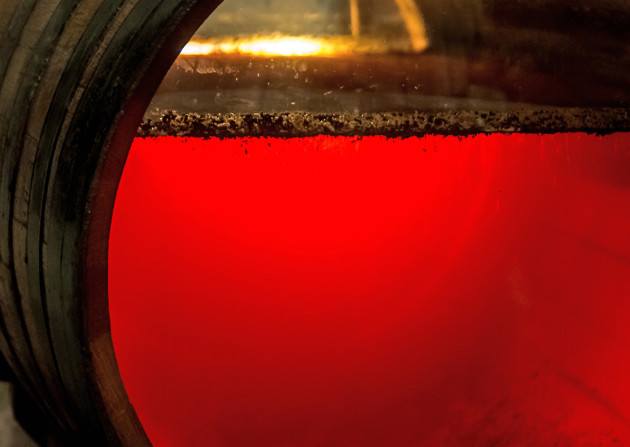
Friday read: Chris Losh hits the flor with manzanilla
You have to hand it to Moorish architects – they know a thing or two about keeping cool in the heat. And keeping a lid on the extremes of an Andalucian summer is essential to retaining flor.
This naturally-occurring layer of frothy white yeast is crucial in the creation of pale dry styles of sherry: fino and manzanilla.
Flor has three key characteristics: it insulates the wine underneath from the air, preventing it from oxidising, it eats any sugar in the liquid, making it bone dry, and it adds a distinctive tangy character.
- Read more: Grupo Vinícola Marqués de Vargas joins Araex
It’s also – like all yeast – sensitive to heat and dryness. So no surprise that it’s at its thickest and most vigorous in Sanlucar de Barrameda.
This small town is located right where the Guadalquivir River meets the Atlantic, so as well as having seafood to die for it’s significantly cooler and more humid than the Andalucian interior. It’s noticeably cooler than Jerez, 25km inland.
In the cellars of Jerez, the flor is thinner, and can all-but disappear in mid-summer, and the fino wines are darker, richer and more aromatic as a result. Sanlucar’s manzanillas are brighter, fresher and lighter. The difference, if you like, between a spritz of sea-spray and lemon-salted bread.
Because manzanilla is all about the retention of flor, and because flor likes it cool and damp, it’s no surprise that Sanlucar’s best barrel warehouses have unfettered access to the prevailing westerly winds, that blow in off the sea.
But there’s more to it even than that, as a visit to Bodega Barbadillo’s magnificent catedral bodega shows.
Since hot air rises, its astonishing 14m high roof keeps the barrels cool, while the sheer volume of air prevents big changes in temperature. The walls are 1m thick so don’t transmit the power of the relentless summer sun, and, made of sandstone, they draw up any moisture from the ground. Sand on the floor helps raise the humidity.
The whole building is angled lengthways, north-east to south-west, so that two sides – the south and west can catch the prevailing sea breeze. On these sides the largest windows are left open, while the windows on the northern and eastern sides (which get hot winds) are kept shuttered. It’s a 19th century masterclass in temperature control without air-conditioning.
You can see the impact of this by tasting through barrels from different parts of the cellar. Those in the warmer, darker side of the bodega are softer, fruitier and rounder. But draw a nascent manzanilla from the cooler, damper, wind-affected side and the wine is slimmer and more savoury with an almost chalky character.
‘It’s got a crisp finish, and what appears to be higher acidity,’ says , area director for Bodegas Barbadillo. ‘But in actual fact that’s the yeast influence.’
This impact of the ageing environment is rather like the difference between a cognac aged in France and an early-landed bottle matured in (cooler, damper) Bristol – only within the same building.
Over the six years it takes to create a manzanilla, these differences from one side of the cellar to the next are blended away. Sherry’s solera system means that barrels are regularly having liquid drawn off and replaced by new (younger) wine. But it goes to show the sheer impact that the environment has on the style of the final wine.
‘The influence of the temperature and the humidity is huge,’ says Montse Molina, who has been chief winemaker at Barbadillo for over 25 years. ‘There are big differences within the same building, so you can see that there will be big differences between Sanlucar and Jerez.’
As for how these translate in the glass, Molina is almost reverential.
‘Fino is [all about] almonds,’ she says. ‘But for manzanilla it’s not so easy. It’s yeast, olive oil and dried white flowers. Fino is narrow in the mouth, manzanilla is round. And that’s down to the place. The yeast works in a different way.’
A Flor Refresher
Most sherries start the same way: the white grapes are picked, fermented (usually to about 12-13% abv) and fortified up to around 15% before being left in old oak barrels.
These 500-litre ‘botas’ (butts) are stacked in layers of three in warehouses all round the ‘sherry triangle’ that runs from Jerez to Sanlucar de Barrameda and Puerto de Santamaria.
While they’re in there, the wine starts to develop a layer of yeasty white froth. This flor is intrinsic to the whole of sherry. If it retains it, a barrel will go on to become a fino (or manzanilla, if it’s being aged in Sanlucar de Barrameda).
If its flor is negligible, the wine will become an (oxidative style) oloroso; if it starts promisingly but then dies off it will become an amontillado.
Wineries can elect to kill off the flor (and start the oxidative process) either by moving a barrel to a warmer part of a cellar, or by fortifying a wine up to 17.5%.





